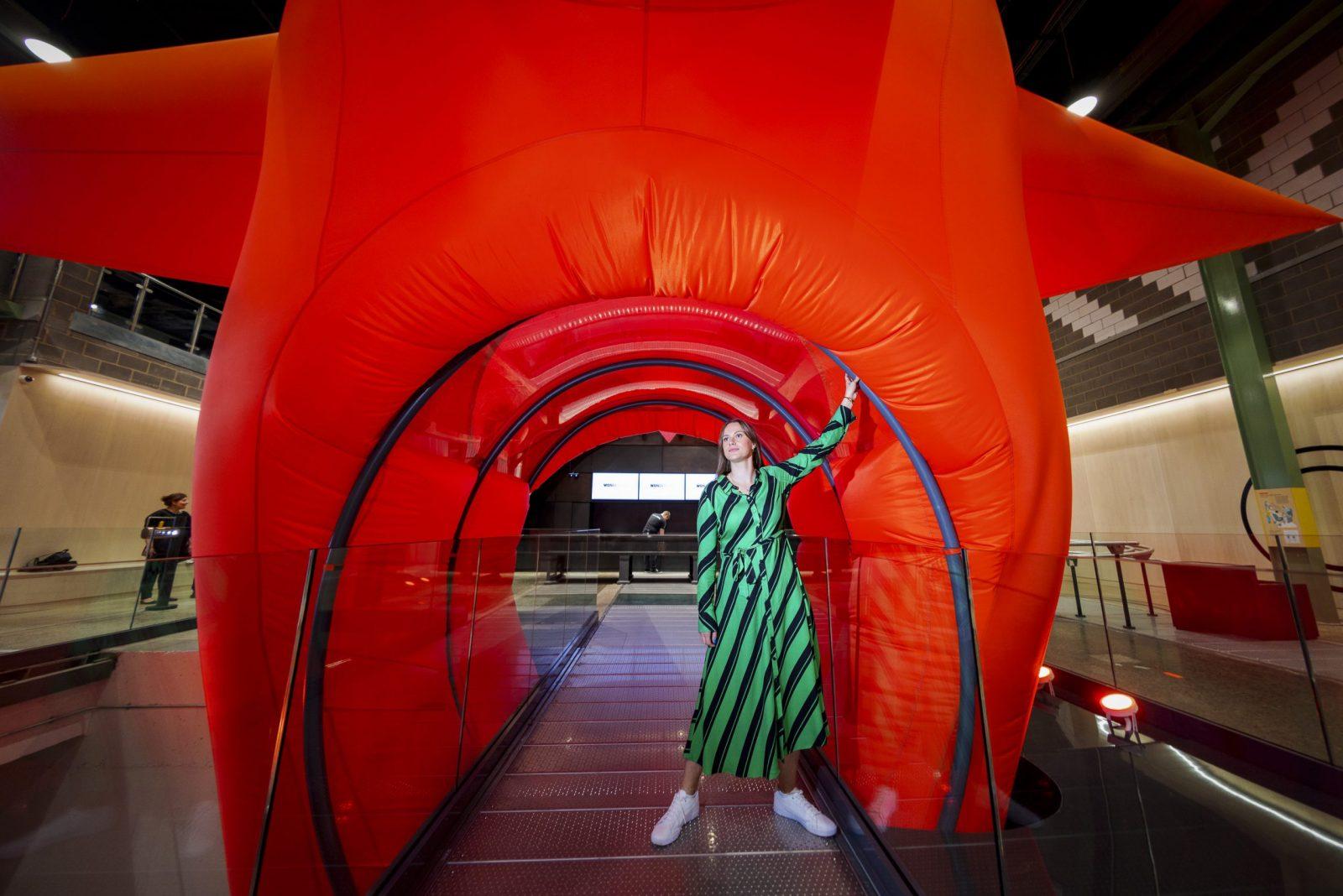The National Railway Museum’s largest new gallery in more than a decade has opened to the public today after five years in development.
Named Wonderlab: The Bramall Gallery, it features 18 exciting hands-on interactive exhibits which aim to inspire and spark curiosity in visitors around the themes of railways and engineering.
Aimed at families with children aged 7-14 and school groups, the gallery is housed in the museum’s 1,500m2 former locomotive workshop building next to Great Hall.

Alongside the interactives, visitors will also be able to see live science shows and demonstrations inside the Weston Showspace and at a demonstration bar.
Judith McNicol, Director of the National Railway Museum, said:
“Wonderlab: The Bramall Gallery represents the first area of the museum to undergo significant changes as part of our Vision 2025 masterplan and the result is a fantastic new interactive gallery that is a real asset for visitors and the city.
“The gallery was developed in partnership with the rail industry and other experts and we have listened to visitor feedback about the need for more interactive, hands-on experiences. We want to ensure that children have great fun while developing a spark of interest in engineering that will contribute towards tackling the UK’s shortage in STEM skills.”

The opening day will also see the unveiling of a dramatic new permanent artwork by Steve Messam. Called ‘Mass’ the brightly coloured inflatable sculpture dominates the centre of the gallery at 12 metres high and 16 metres wide. Like a hot air balloon, the structure uses air under pressure to support itself.
Commenting on his latest artwork for Wonderlab, Steve Messam said:
“Mass came about because I wanted something that had a strong visual impact that would command the large museum space and create a visual focal point. The artwork is very bold and stands taller than a house and I want people to have an emotional reaction when they experience it for the first time.
“Art is about experimenting and pushing the boundaries and engineering is all about finding solutions, so it feels appropriate that it is to be part of Wonderlab.”

Visitors will also be able to build and design large scale structures like bridges and towers in Pippa Hale’s ‘Play Revolution’. This colourful interactive artwork comprises large foam shapes that can be moved around the space encouraging visitors of all ages to think like engineers. ‘Play Revolution’ is inspired by the museum’s archives and collections with input from children and young people from The Snappy Trust.
Visitors will be able to see a live science show as part of the general entry ticket to Wonderlab. Fire Powered, an explosive and dramatic show will demonstrate how (safe) explosions can be created and controlled to make an engine work.

Visitors can also get up close to exciting and unusual explainer-led experiments at the Demo Bar that explore railway engineering.
Wonderlab has been designed by architects De Matos Ryan who previously worked on the newly reopened Young V&A in London.
Jose Esteves De Matos, Director of De Matos Ryan, said:
“Inspired by its unique and rich railway surrounding and the gallery’s previous life as an engineering locomotive workshop, our design explores the different forms of motion evoked by railway engineering, particularly the perception of relative motion in relation to static volumes, surfaces, textures and light.
“We are absolutely delighted to see this interactive gallery come to life with the help and collaboration of the community that surrounds it. We hope it will inspire the imagination, creativity and problem-solving skills of future generations in a fun and engaging manner.”
The launch of Wonderlab will create a significant new attraction for families visiting York and for family residents of the city. The museum has seen an increase in visitor numbers following the Covid-19 pandemic with 572,577 visits in 2022, making it the most-visited free attraction in the region (Visit Britain).
The 18 exhibits focus on different elements of railways and engineering and encourage people to think like engineers and develop skills as they design, build and test to produce different outcomes.

Among highlights are ‘Feel the Force’ where visitors can enter a giant wind tunnel to learn about streamlining and ‘The Great Machine’ which encourages people to solve problems and create their own transport network to move balls through a sequence of connecting tubes.
The process of testing and prototyping to create the exhibits has involved more than 1,300 people with input from experts in the rail industry, education, local community groups and members of the public.
The gallery’s major funding partner is the Liz and Terry Bramall Foundation who have supported with a gift of £2.5m towards its creation in March 2022.
Wonderlab has also received funding from Garfield Weston Foundation, Eversholt Rail, Friends of the National Railway Museum, the Royal Commission for the Exhibition of 1851, The Holbeck Charitable Trust, the Kirby Laing Foundation, and the Charles and Elsie Sykes Trust.
To find out more about Vision 2025 and to book tickets for Wonderlab: The Bramall Gallery, visit: www.railwaymuseum.org.uk/2025/wonderlab-the-bramall-gallery






